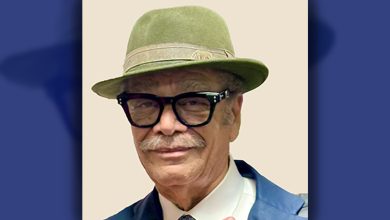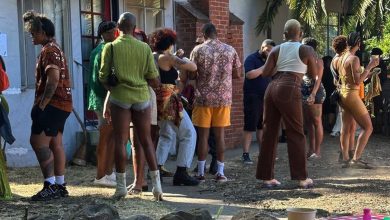Arts Education Funding in California: How Will Proposition 28 Roll Out?

By Karen D’Souza
EdSource
Austin Beutner recalls struggling to fit in at a new school as a fifth grader. He felt awkward and alone until the music teacher suggested he try playing an instrument. Beutner took up the cello and found his voice.
That epiphany transformed his childhood, paving the way for an eclectic career that includes working for the U.S. State Department, serving as vice mayor of Los Angeles, investment banking, philanthropy and keeping the nation’s second-largest school district afloat during the depths of the pandemic.
Beutner, the former superintendent of LAUSD who spearheaded Proposition 28, recently talked with EdSource about how the groundbreaking arts education initiative will roll out and why this is such a game-changer for California public education. Proposition 28 creates a guaranteed annual funding stream for music and arts education by setting aside 1% from the state’s general fund. In 2023, that comes out to roughly $941 million.
What’s your reaction to the measure succeeding?
I’m excited. It’s a meaningful amount of funding. It’s going to make a difference in every school, hopefully for every kid. The key is that art is not a luxury. It’s the glue that binds together a proper and good education. It binds together literacy, math and critical thinking. I don’t know why, frankly, policymakers haven’t made investing in the arts and music more of a priority when the path to a livelihood for so many students in the creative economy in California is right there.
I know the funding will fluctuate with the overall budget. How much funding per child this year?
Based on our estimate, it’s $112 per kid, preschool through 12 plus $85 for every Title 1 (low-income) kid. Every year. Forever. You know, it’ll bump down with some budgets and bump up with others.
How does it compare to other states?
One of the things that we uncovered was just how poorly the state of California was doing in this regard, where barely 1 in 5 public schools have a full-time arts and music program. In New York, it’s 4 out of 5. They have invested more carefully and more thoroughly in arts and arts education for children than California has. So the state of California has to catch up. I think this initiative puts us back in the lead.
How did arts education get cut from the schools in California in the first place?
The original sin is if you cut funding for schools, is that you’re not cutting fat, you’re cutting muscle and bone. You see lots of symptoms of inadequate funding. You see class sizes that are too big. The number of students per credentialed teacher in New York is something like 35% less than it is in California. You also see it in the offering of programs for children. If you’re testing for math and English, then those are probably the last to be cut. The arts are misperceived as extras, and the extras get cut.
Do you see the new arts programming as fluid? Could a school pivot from animation to sculpture to dance over time?
Absolutely. Ideally, you’re not going to pivot every six months. It won’t be a very good program. But they might try something and a year from now, say we’re not seeing what we want. Or they might see something better a year down the road and say, you know, let’s switch to that. But hopefully, schools will make an informed and thoughtful choice.
Why do you see this funding as sparking community engagement?
It’s a good place to start. It’s a path to bringing families in and giving them a voice.
Historically, most school funding in California comes very prescriptively from the top. From Sacramento to school districts, from school districts to schools. They say: Do this. Well, it’s the opposite here, which is, here’s funds for your choice of arts programs. I think there’s some exciting opportunities for school communities to engage around this choice. Imagine, a school might be thinking of a different math curriculum, and they say, “Come on in, families, and let’s have a discussion about math curriculum.” Some will come, I’m sure, but many might be intimidated. But with arts and music, everybody has a point of view. Everybody listens. Everybody watches the Grammys. Everyone will watch the Oscars.
There’s a neat opportunity for school communities to engage and help their school leadership make a good choice.
Tell me about your experience with the cello.
My parents changed jobs, so I had to start a new school in February of fifth grade. Middle of the school year. This was Michigan, but I wasn’t worried about the cold weather outside. It was really cold. I was worried about lunch because as a shy kid in the fifth grade at a new school, my great concern was, who am I going to sit with at lunch? Fortunately, I was invited to a music class. It was a string class, and they handed me a cello. I didn’t know what a cello was. But there was lunch, thank goodness! And for me, cello became bass, bass became guitar. I developed a sense of agency and confidence in high school. I could perform in front of thousands of people before I could speak in front of tens of people. It all started with that connection to other people, feeling safe, feeling like I had found a group of friends.
How long will the program take to find its stride?
It’s early days. Will schools find the best possible program right out the park? Probably not. The money will provide for about 15,000 paying jobs, full and part-time, in public schools. Are there going to be enough teachers, or teaching artists to be found, initially? Probably not. But I’d call those high-class problems because it’s still going to be better than it was. I think if you look five years down the road, the sands will have shifted. That’s where California is better placed than any of the 49 other states because we have so many gifted, creative people in this state, musicians, writers, performers, artists of all kinds, who have had a hard time connecting with the schools.
What’s the next step in the rollout?
The first step involves an advisory council that I’ve gotten together of supporters of the initiative itself to work on three things. The first is just to make sure basic information is well shared. You know, how much is it? How does it work? Some of the basics of implementation. The second would be to elevate best practices in the schools. There are great art programs out there that can help show the way. The third piece is staffing. The money will provide for about 15,000 jobs. How do we better connect that talent, arts educators and teaching artists, to the schools?
When will the funding start to land in schools? This fall?
In substance, yes. As a technical matter, the school year starts July 1. There’s nothing to stop an entrepreneurial school from starting in summer school.
Copyright © 2023 Bay City News, Inc. All rights reserved. Republication, rebroadcast or redistribution without the express written consent of Bay City News, Inc. is prohibited. Bay City News is a 24/7 news service covering the greater Bay Area.
###
KarenD’Souza/EdSource0833a02/21/23
https://edsource.org/2023/arts-education-funding-in-california-how-will-proposition-28-roll-out/685800/www/bcn/general/02/newsclip.23.02.21.08.36.01.1.txt
The post Arts Education Funding in California: How Will Proposition 28 Roll Out? first appeared on Post News Group.




